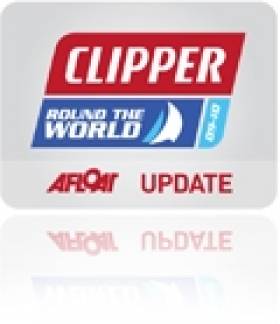Displaying items by tag: Doire
#Clipper - Derry-Londonderry's newly elected Mayor Brenda Stevenson will travel to New York this week to join members of the Derry-Londonderry-Doire crew participating in the 2013-14 Clipper Round the World Yacht Race.
The crew will arrive at the stopover port in the Big Apple ahead of their departure for the next leg of the race that will bring them to their home port in time for the LegenDerry Maritime Festival celebrations.
Mayor Stevenson will be accompanied on the trip by Derry City Council’s town clerk and chief executive Sharon O’Connor along with Des Gartland, Invest Northern Ireland’s north west regional manager, to engage with businesses and key members from the Northern Ireland diaspora in New York.
Speaking ahead of the visit, Mayor Stevenson said: “I am really looking forward to meeting the skipper Sean McCarter and his crew and helping to promote details of our fantastic maritime festival celebrations that are planned to coincide with the arrival of the Clipper Race fleet when they arrive in the city at the end of the month.
“We are hugely excited about being in New York and getting an opportunity to showcase our city, network with local business people and encourage them to be part of our celebrations and our new legacy story since our City of Culture status success."
The Derry-Londonderry-Doire crew are expecting a huge welcome on arrival in New York, with many family and friends travelling to the stopover location as well as large numbers of Irish diaspora who are following the team’s success in the race and are keen to show their support.
The mayor added: “It’s a huge honour for me as the newly elected mayor to travel to New York to represent our city and to meet and greet the crew as well as meet with business people to forge business and trade links that will help us attract investment and new business opportunities to the city and wider north west region.
“It’s a great opportunity for us to encourage New Yorkers to come to Derry for our LegenDerry Maritime Festival celebrations and to update them on the city’s progress and legacy promises we are currently delivering on.”
During the trip, the delegation will attend a number of engagements including a UK Trade & Investment event to celebrate the Clipper Round the World Race stopover; an event organised by Clipper Ventures at the NASDAQ stock exchange; the Origin Theatre event honouring the Irish Consul General; and a corporate lunch event organised and funded by the NI Bureau, Invest NI and Tourism Ireland.
Mayor Stevenson will also visit the New York Irish Centre to launch the visiting exhibition from the Foyle Civic Trust, ‘Derry Londonderry Goes Global’. held last year as part of the Foyleside city's City of Culture programme. The visit will also include an opportunity to meet members of the New York Derry Society.
Gartland added: “This event offers a tremendous opportunity to promote Derry-Londonderry and the north west region both to potential investors and as a tourism location.
"Invest NI is working closely with Derry City Council to maximise the opportunities that the Clipper Round The World Race presents.”
Details of the LegenDerry Maritime Festival, which will take place in Derry~Londonderry on 21-29 June to welcome the Clipper Race fleet to the city, are available at www.legenderrymaritimefestival.com.
























































